For me, the biggest highlight of the 2012 Tenkara Summit was meeting and being able to fish with all the Japanese anglers that attended. It was great to learn about tenkara from people who practice it in its birthplace. As you might imagine, there was a lot of talk and trading of tenkara flies. It was interesting to see what each angler uses for their “one fly” and even get to watch them tie them. One of the anglers I was fortunate enough to meet was Masami Tanaka, a member of the storied Harima Fishing Club. His flies were very interesting to me because he incorporates a lot of flash into them using sparkle braid.
In addition to being very buggy looking, they “glow” in sunlight (the pictures below really don’t do them justice):
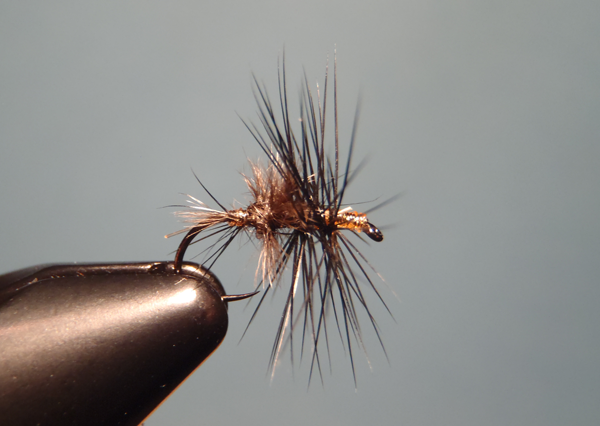
;
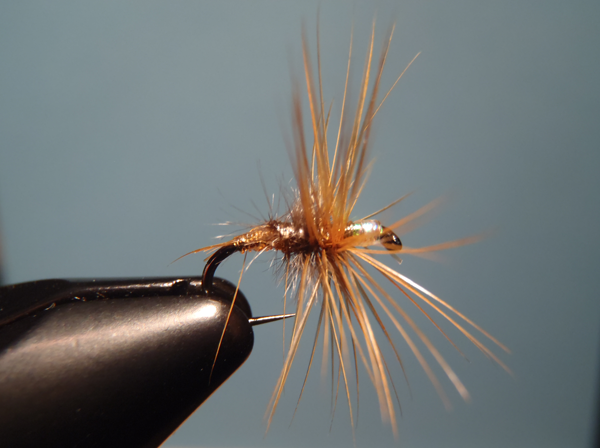
;
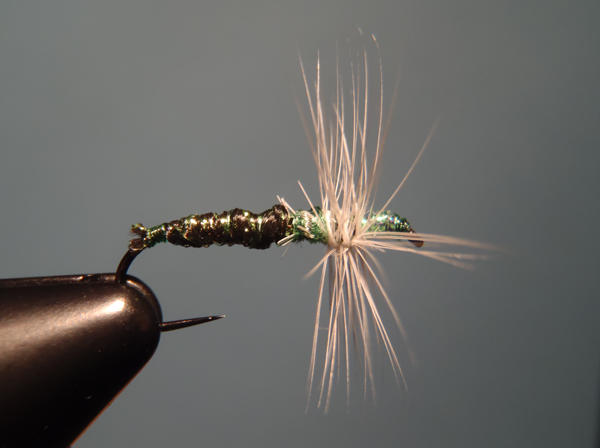
I rarely use synthetic materials in my tenkara flies but after looking at his flies, I can definitely see how they would be irresistible to trout. That makes me want to experiment with synthetics more.
One feature I consider especially innovative about Tanaka-san’s flies is that he winds the sparkle braid at the head of the fly. Most sakasa kebari just use thread at the head (sometimes a brighter or contrasting color) but nothing that interesting. It adds flash–but not so much that it appears unnatural. It coyly reveals just enough of itself through the veil of hackle to be enticing without being gaudy. I think this is a great example of balance between natural and synthetic materials in fly design.
In addition to being a creative fly tier and angler, Tanaka-san also makes his own bamboo tenkara line spools and I was humbled when he offered to give me one. This is one of my most cherished tenkara items not only because it is beautiful and unique, but because it will always be a reminder of what a great day of fishing we had together.
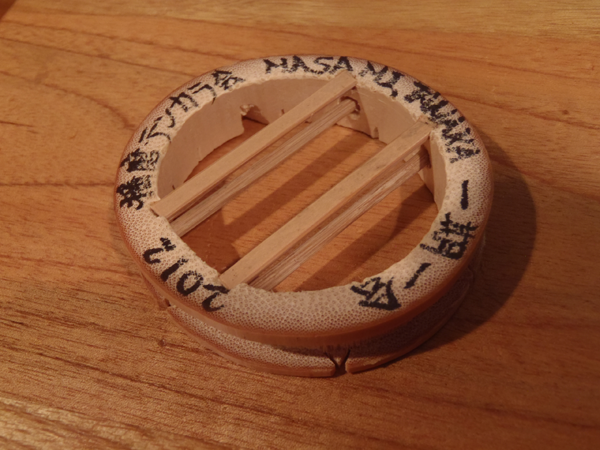
Before we started fishing, I handed everyone my fly box and let them take a fly. Tanaka-san (far right) inspecting one of my sakasa kebari …
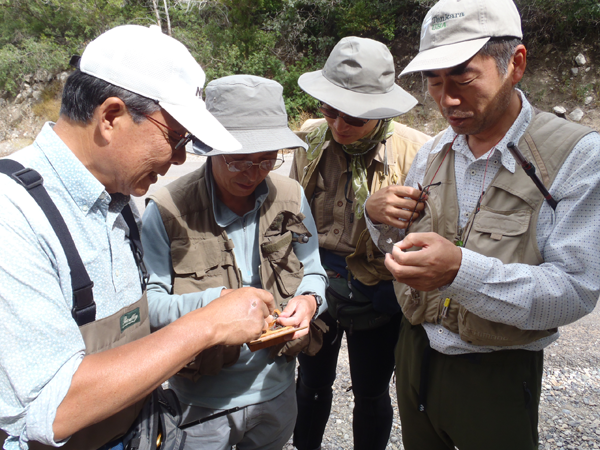
Flies seem to be the currency of fly fishing camaraderie. No matter what our culture, background, or preferred technique, flies unite us. And luckily–unlike real money–you can make your own! From left to right: Dr. Ishigaki, Eiji Yamakawa, Mr. Ishihara, Masami Tanaka, Jason Klass …
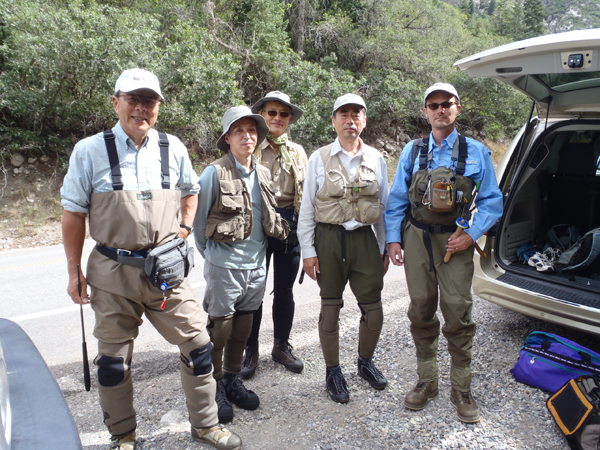


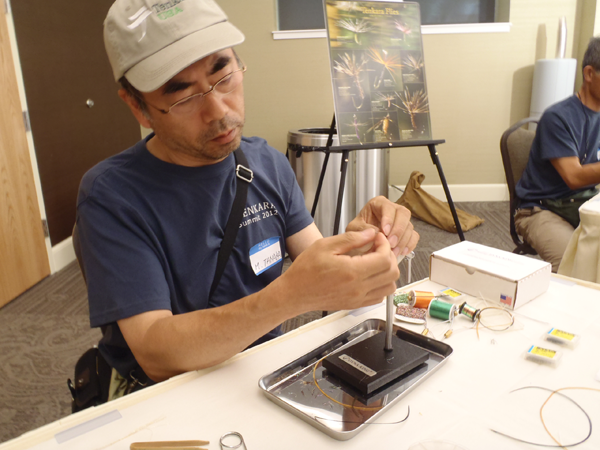






It shocked me how dissheveled these flies looked when I saw them at the summit. so many Japanese tenkara anglers take this approach, and I am now convinced that it is on purpose rather than just being inattentiveness to the fly tying process (or in the case of the summit, nerves from tying in front of a crowd). I enjoy spending time on my flies and making each one a little work of art. But I can certainly apreciate the utilitarian “wabi-sabi” these Japanese tiers bring to the table. My favorite so far being the flies of Ishimaru Shotaro, his flies litterally look like an explosion of black thread, hackle, and hook. after all the less time you spend tying flies the more time you get to fish right? 🙂
Hi Matt, I agree. I think it’s “intentional neglect” of perfection.
But for me, tying less doesn’t mean more fishing time. I tie when I can’t go fishing.
Wow! that’s great. Really no reason NOT to use synthetic material. What a cool group of guys! Great write-up. Thanks again
The hackle on the flies on most of the Japanese flies seem to be stiff rather than soft like I use on most of my flies. Does it seem to work better or as well for this style of fly?
Hi Tom, not sure if it’s “better”, just different. I’ve actually used dry fly hackle on sakasa kebari and was surprised how well it actually moved underwater. Also the stiffer hackle gives you the option to fish it in the surface film. Make a few false casts to shake the water out and then fish it like a dry fly/emerger.
Not sure, but perhaps he follows “Wabi-sabi”? It’s kind of (unintentionally) the method I follow in life.
Basically “it is what it is”. Imperfection is it’s beauty.
http://en.wikipedia.org/wiki/Wabi-sabi
When I was new to flytying, I wanted to tie every pattern I read or learned about. In the process, I accumulated a lot of materials that I’ll probably never use again, because I’ve pared my flytying down to just a few patterns that I am confident will work on my homewater.
Now tenkara opens a whole new avenue for my flytying mania to resurface. Guess I’ll have to purchase some more plastic storage bins.
The EXACT same thing happened to me! But I like it. It’s like reincarnation. 🙂
Guides Unlimited has a post about damaged flies today… Maybe this is another reason for Wabi-sabi flies?
https://www.facebook.com/photo.php?fbid=370954862991193&set=a.133784803374868.35150.129620657124616&type=1
I have to say that when you look at crippled emergers or even most of the bugs that you catch in a drift net – a lot of them look pretty dishevelled 🙂
Yeah, Keith Richards disheveled
I think the term he prefers is shambolic
LOL
Hy Jason. I start with Tenkara this season. Your post is very good, and your flies too. I leaving in Montenegro, contry of beautifull river and mountain. I think the tenkara fishing bee good on my river and streams. Great hello from Montenegro .
Jason, give as some pictures from river.
Nice flies! How about a recipe?
Also, Jason, don’t know if you caught this, but he wrote “一期一会” on the line holder. This is ichigo ichie, an even better concept than wabi sabi. It translates as something like “one lifetime, one meeting” and means that each time you meet a person – friend or stranger – you should approach the encounter as though it was the only time in either of your lifetimes that you were meeting, with no expectations or baggage. Each meeting between two people should stand on its own perfectly. This is the foundational attitude of the Japanese tea ceremony. Sounds like you and Mr. Tanaka lived up to the ideal when you met.
Hi Alex, thanks for pointing that out. Eiji Yamakawa told me the translation and I think it is a beautiful sentiment. I forgot to mention that in the post. That makes the spool (and the meeting) even more special.